Input interpretation

butyl acetate
Chemical names and formulas
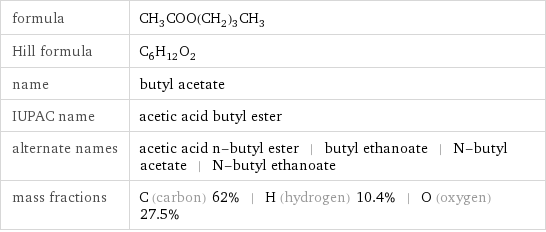
formula | CH_3COO(CH_2)_3CH_3 Hill formula | C_6H_12O_2 name | butyl acetate IUPAC name | acetic acid butyl ester alternate names | acetic acid n-butyl ester | butyl ethanoate | N-butyl acetate | N-butyl ethanoate mass fractions | C (carbon) 62% | H (hydrogen) 10.4% | O (oxygen) 27.5%
Lewis structure

Draw the Lewis structure of butyl acetate. Start by drawing the overall structure of the molecule, ignoring potential double and triple bonds: Count the total valence electrons of the carbon (n_C, val = 4), hydrogen (n_H, val = 1), and oxygen (n_O, val = 6) atoms: 6 n_C, val + 12 n_H, val + 2 n_O, val = 48 Calculate the number of electrons needed to completely fill the valence shells for carbon (n_C, full = 8), hydrogen (n_H, full = 2), and oxygen (n_O, full = 8): 6 n_C, full + 12 n_H, full + 2 n_O, full = 88 Subtracting these two numbers shows that 88 - 48 = 40 bonding electrons are needed. Each bond has two electrons, so in addition to the 19 bonds already present in the diagram add 1 bond. To minimize formal charge oxygen wants 2 bonds and carbon wants 4 bonds. Identify the atoms that want additional bonds and the number of electrons remaining on each atom: Fill in the 1 bond by pairing electrons between adjacent highlighted atoms: Answer: | |
3D structure
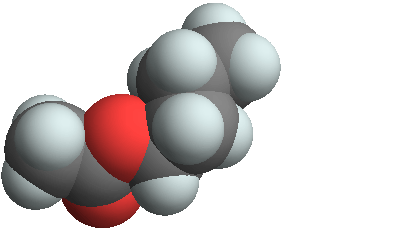
3D structure
Basic properties
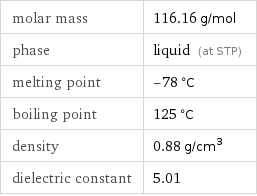
molar mass | 116.16 g/mol phase | liquid (at STP) melting point | -78 °C boiling point | 125 °C density | 0.88 g/cm^3 dielectric constant | 5.01
Liquid properties (at STP)
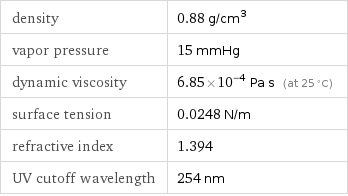
density | 0.88 g/cm^3 vapor pressure | 15 mmHg dynamic viscosity | 6.85×10^-4 Pa s (at 25 °C) surface tension | 0.0248 N/m refractive index | 1.394 UV cutoff wavelength | 254 nm
Units
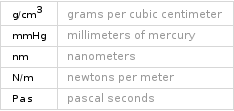
Thermodynamic properties
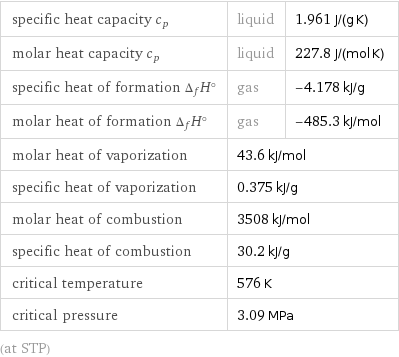
specific heat capacity c_p | liquid | 1.961 J/(g K) molar heat capacity c_p | liquid | 227.8 J/(mol K) specific heat of formation Δ_fH° | gas | -4.178 kJ/g molar heat of formation Δ_fH° | gas | -485.3 kJ/mol molar heat of vaporization | 43.6 kJ/mol | specific heat of vaporization | 0.375 kJ/g | molar heat of combustion | 3508 kJ/mol | specific heat of combustion | 30.2 kJ/g | critical temperature | 576 K | critical pressure | 3.09 MPa | (at STP)
Chemical identifiers

CAS number | 123-86-4 Beilstein number | 1741921 PubChem CID number | 31272 SMILES identifier | CCCCOC(=O)C InChI identifier | InChI=1/C6H12O2/c1-3-4-5-8-6(2)7/h3-5H2, 1-2H3 RTECS number | AF7350000 MDL number | MFCD00009445
NFPA label

NFPA label

NFPA health rating | 2 NFPA fire rating | 3 NFPA reactivity rating | 0
Safety properties
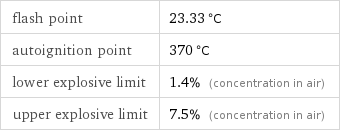
flash point | 23.33 °C autoignition point | 370 °C lower explosive limit | 1.4% (concentration in air) upper explosive limit | 7.5% (concentration in air)

DOT hazard class | 3 DOT numbers | 1123